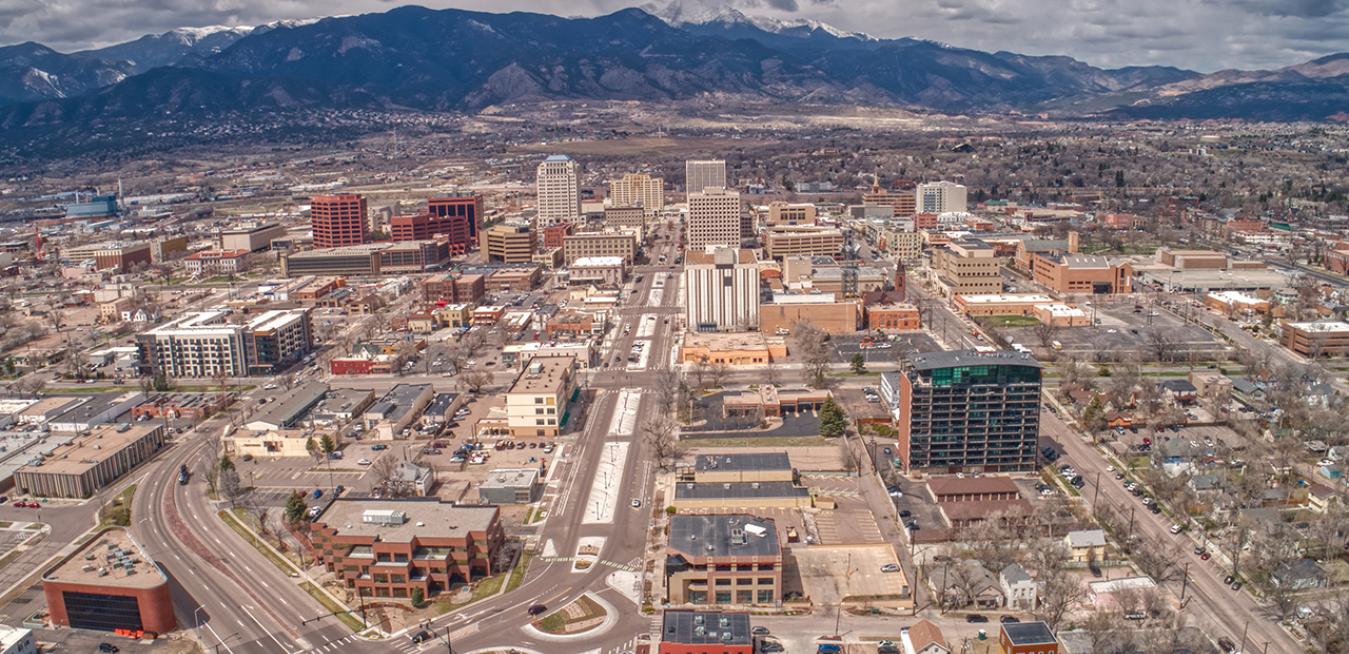ROADMAP TO RENEWABLES
The hulking blue edifice of the Martin Drake Power Plant does not top most tourists’ to-do lists when they visit Colorado Springs, Colorado. But it could soon serve as a blueprint for energy providers seeking to cut their carbon footprint and bring more renewable energy online. Colorado Springs Utilities, which had planned to decommission the coal-burning plant in 2035, was able to accelerate its plans by more than a decade thanks to six innovative GE gas units the utility expects to install by the end of next year. Once the GE gas units are up and running, Springs Utilities, as it’s known locally, forecasts CO2 emissions will decline 80% by 2030 — a big win for the community. Another big win? The cost of power production should also fall as the utility shuts down the 40-year-old Drake plant, benefitting local customers.
Straight aero: The six innovative gas units at the center of this deal are the LM2500EXPRESS. They are so-called “aeroderative” turbines because their beating heart is technology GE originally developed for the CF6 jet engine. The units can ramp up very quickly — just like lifting Air Force One, which uses four CF6 engines — and can also quickly power down. The GE turbine’s ability to generate power on demand within minutes makes it an effective bridge for utilities seeking to move away from coal and use more wind and solar power — which is all part of GE’s larger gas and renewable power strategy. “As we take on more renewable power from wind or solar, there’s volatility,” says Thomas Cook, managing engineer for Colorado Springs Utilities operating engineering group. “We need to have units that are responsive and able to fill any gaps to ensure the reliability of our system is solid.”
Click here to learn more about how GE Gas Power is helping to drive decarbonization.
MAPPING COVID-STRICKEN LUNGS
When doctors want to assess how COVID-19 has damaged patients' lungs, they often use CT scans to study telltale gray and white patches that show inflammation and damage. But these scans are akin to looking at a satellite image of a neighborhood: You can see in general where the houses, parks and streets are, but the view lacks some details. Now scientists at GE Research are seeking to get something closer to a more detailed satellite street view that you can get online at the house level. Over the next six months, they will map individual cells in samples of lung tissue from COVID-19 patients and study how the cells interact with one another. “We hope we can help provide insights into new therapeutic approaches,” says bioscientist Fiona Ginty, who is leading the GE team. “But we also want to better understand how the disease and damage progress.”
Spatial awareness: The researchers will use a process called spatial cell analysis to map the lungs, which will allow them to see which cells are attacked by the virus and how the immune cells respond. The study, which is funded by the National Institutes of Health and is a partnership with the University of Rochester Medical Center, will build on the work of two ongoing NIH cell-mapping programs — the Human Biomolecular Atlas Program, an effort to map every cell in the body, and the Lung Molecular Atlas Program, which aims to create the world’s first comprehensive map of the developing human lung. At the end of the study, Ginty and the GE team plan to publish their work online to help other researchers looking for ways to fight the virus.
Click here to read how GE researchers are using technology to fight COVID-19.
In 2020, journalist and filmmaker Mikey Kay traveled the world in search of stories about the healthcare industry’s response to the pandemic. Watch to learn about this mission and the man behind it.
— QUOTE OF THE DAY —
“It’s a way to allow a large amount of renewables to come on to the grid but still deal with the intermittency that is part of the nature of renewables.”
— Ty Remington, director for GE Gas Power
Quote: GE Reports. Images: Getty Images, GE Research.







